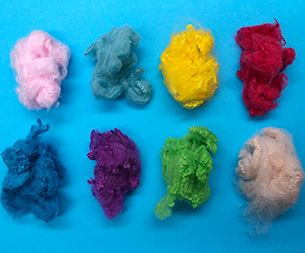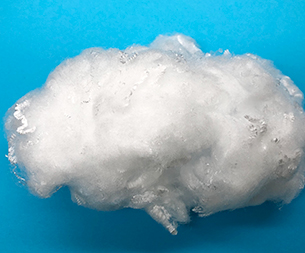From January to July 2020, the domestic and foreign demand markets for textiles and apparel will continue to be repaired. However, due to the accumulation of high inventories in all links of the textile industry chain, the recovery of terminal demand in the chemical fiber industry is weak, and some indicators are improving. There have been repetitions, the export pressure of chemical fiber is still relatively large, and the economic benefits have continued the recovery trend in the first half of the year.
Textiles and garments need to gradually pick up inside and outside
According to data from the National Bureau of Statistics, from January to July, the national retail sales of clothing, shoes, hats, and knitting textiles above designated size decreased by 17.5% year-on-year, and the decline was 2.1 percentage points smaller than that from January to June; Retail sales of such commodities fell by 0.9% year-on-year, and the rate of decline narrowed by 2.0 percentage points from January to June. However, from the perspective of direct chemical fiber demand, from January to July, the output of cotton blended yarn and cotton blended fabrics decreased by 2.39 and 1.24 percentage points respectively from January to June; the output of chemical fiber yarns and chemical fiber staple fabrics decreased by 1- It continued to narrow in June. The output growth rate of nonwovens still maintained a relatively high growth, with a year-on-year increase of 10.97%, an increase of 4.42 percentage points from January to June. According to China Customs data, my country's textile and apparel exports from January to July were US$156.482 billion, a year-on-year increase of 5.57%, and the growth rate was 2.41 percentage points higher than that from January to June.
The trend of narrowing decline in chemical fiber output has repeated
According to statistics from the National Bureau of Statistics, the output of chemical fiber from January to July 2020 was 33.098 million tons, a year-on-year decrease of 2.38%, which was 1.4 percentage points deeper than that from January to June. This is the first time since March that the decline in chemical fiber output has continued to narrow. repeatedly. Among them, the output of polyester was 26,342,300 tons, a year-on-year decrease of 1.87%, and the output of nylon was 2,349,400 tons, a year-on-year decrease of 0.16%, both of which turned from positive growth to negative growth from January to June; the output of viscose staple fiber was 2,824,700 tons, a year-on-year decrease of 7.82% , The decline continued to narrow; spandex output was 455,200 tons, an increase of 0.88% year-on-year, and the growth rate remained stable.
Chemical fiber outlet pressure is still high
According to China Customs data, my country imported 439,400 tons of chemical fiber from January to July, a year-on-year decrease of 17.73%, and the decline was 2.53 percentage points deeper than that from January to June. In terms of exports, the chemical fiber exports from January to July were 2.3163 million tons, a year-on-year decrease of 19.02%. Compared with January to June, although there was still a narrowing trend, the decline only narrowed by 0.19 percentage points. Among them, the export of polyester staple fiber was 410,100 tons, a year-on-year decrease of 31.77%, the export of polyester filament was 1,366,600 tons, a decrease of 14.57%, the export of viscose staple fiber was 193,400 tons, a decrease of 20.62%, and the export of viscose filament was 35,300 tons. A year-on-year decrease of 30.50%, and the rate of decrease was less than 1 percentage point from the January-June period, indicating that the export market for chemical fiber products is still under pressure.
Economic benefits continue the restoration trend in the first half of the year
According to data from the National Bureau of Statistics, from January to July 2020, the main business income of the chemical fiber industry was 431.9 billion yuan, a year-on-year decrease of 17.33%, and the decline was 1.05 percentage points smaller than that from January to June; the total profit realized was 8.510 billion yuan, a year-on-year decrease of 40.36 %, the decline narrowed by 1.50 percentage points from January to June. The loss of the industry was 41.84%, which was 2.41 percentage points less than that from January to June; the loss of loss-making enterprises increased by 64.13% year-on-year, and the growth rate fell by 7.56 percentage points from January to June.
Cautious investment, shrinking fixed asset investment
According to data from the National Bureau of Statistics, from January to July 2020, the fixed asset investment in the chemical fiber industry fell by 21.2% year-on-year, which was 4.3 percentage points deeper than that in the first half of the year. It failed to continue the trend of slowing down in the first half of the year. It shows that under the circumstance of sluggish market demand, corporate investment remains cautious, and it will take time for investment confidence to recover.
(Source: China Chemical Fiber Industry Association)
- The core applications of polypro
- Textile foreign trade has shifte
- How to choose the right polyprop
- Cross-border textile merchants a
- Optimization of Production proce
- What impact does the United Stat
- Unveiling the outstanding proper
- The 11th China International Sil
- How does polypropylene staple fi
- The 2025 International Textile F
- Markets
- Automotive Products
- Nonwoven Lining
- Geosynthetics
- Liquid Filtration
- Apparel and Textiles
- Hygiene Products
- Building and Construction
- Other Markets
- Contact Us
- Contact Haibang





